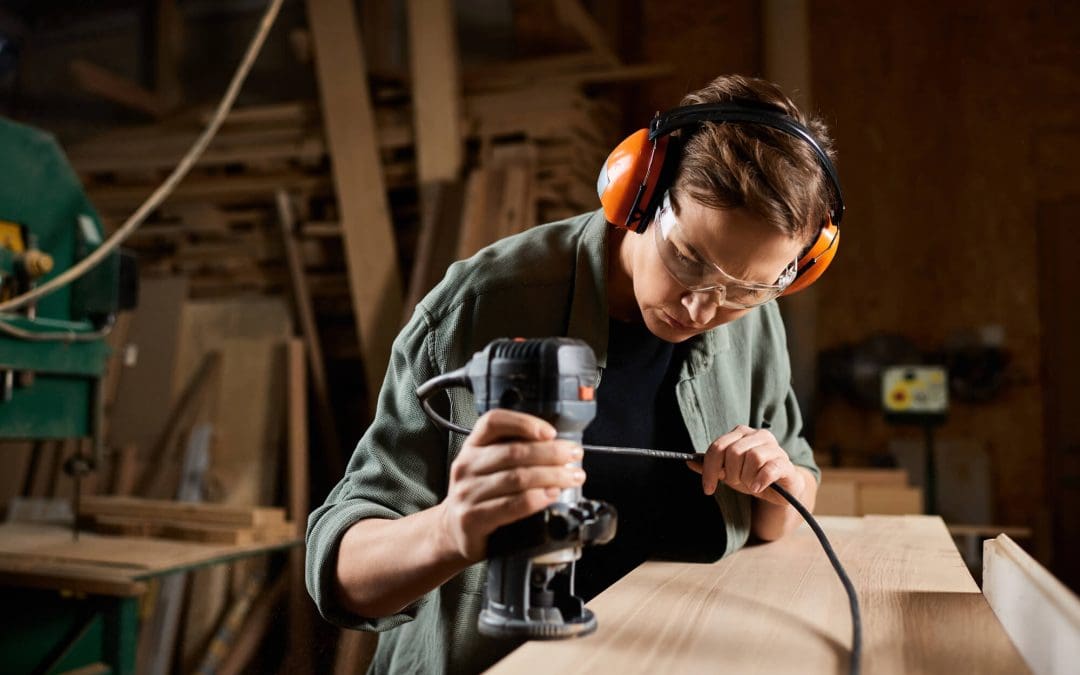Power tools are game-changers for home improvement, woodworking, and just about any hands-on project. They save time, boost precision, and can make the job easier. But they also come with serious risks if you don’t use them properly. Cuts, shocks, flying debris—you name it. Most of these injuries are preventable with a little know-how and a few simple habits. Here are some of our best power tool safety tips you need to know to stay safe and keep your projects on track.
Reading the Manual is the First Step in Power Tool Safety
This one’s easy to skip, especially if you’ve used a similar tool before. But every tool is different, even if they look the same. The manual covers important information like how to operate it, what maintenance it needs, and what safety features are built in. It only takes a few minutes to read through it, and it can save you a lot of trouble.
Dress for the Job
Loose clothing, jewelry, and untied hair can get caught in moving parts fast. That’s a recipe for injury. Stick to fitted clothes and tie back long hair. Safety glasses are a must to protect your eyes from flying debris. Ear protection is a good idea when working with loud tools like circular saws or hammer drills. If there’s dust, wear a respirator or dust mask. Gloves can be helpful, but with some tools—like table saws—it’s actually safer not to wear them, since they can reduce your grip or get pulled in.
Inspect Your Tools Before Use
Before flipping the switch, take a minute to check your tool. Look for frayed cords, loose parts, or any signs of wear. If something looks off, don’t use it until it’s repaired. Make sure the blade or bit is sharp and properly installed. A dull blade forces the tool to work harder, which increases the chance of kickback or losing control.
Keep Your Work Area Clean for Power Tool Safety
Cluttered workspaces create hazards. Tripping over cords or stepping on tools while carrying a running saw is the kind of mistake that can end badly. Make sure you’ve got plenty of space to work, and clean up any sawdust or scrap that could cause you to slip. Good lighting is also key—if you can’t see clearly, you can’t work safely.
Use the Right Tool for the Job
Just because a tool can do something doesn’t mean it should. Don’t try to make a circular saw act like a miter saw, or use a drill to drive a screw that needs an impact driver. Using tools outside their intended purpose wears them out faster and increases the chances of injury. If you’re not sure which tool is best, look it up or ask someone with experience.
Stay Focused and Take Breaks
It’s easy to lose track of how tired or distracted you are when you’re in the middle of a project. But fatigue and distraction are two of the biggest contributors to accidents. If your mind starts to wander or your hands start to feel clumsy, take a break. That five-minute pause could keep you from making a costly mistake.
Don’t Disable Safety Features
Modern power tools have built-in safety mechanisms like blade guards, safety switches, or anti-kickback features. They’re there for a reason. Removing them might make a task seem quicker or easier, but it also makes it more dangerous. If a safety feature is getting in the way, figure out why and adjust your approach instead of bypassing it.
Keep Hands Clear and Maintain Control
Always know where your hands are. It sounds obvious, but accidents happen fast. Use clamps or a vise to hold material in place whenever you can, and keep both hands on the tool unless it’s designed for one-handed use. Make sure your footing is solid and that the tool isn’t too heavy or awkward for you to control.
Unplug When You’re Done
When you finish using a tool, unplug it before changing bits or blades, cleaning it, or putting it away. That extra step can prevent accidental startups, especially if someone else walks into the workspace and doesn’t realize the tool is still live. For cordless tools, remove the battery.
FAQs on Power Tool Safety
What’s the most important safety tip for beginners?
Start by reading the manual and understanding what each part of the tool does. That alone can prevent many common mistakes.
Do I really need safety glasses for every job?
Yes. Even small jobs can kick up debris or sawdust. Eye injuries are some of the most common and easiest to prevent.
Is it safe to use power tools in wet conditions?
No. Water and electricity don’t mix. Always keep your tools dry and avoid working outside in the rain unless you’re using battery-powered tools specifically rated for outdoor use.
How do I know if my blade needs to be replaced?
If the tool starts to bind, burn the wood, or cut unevenly, it’s likely dull or damaged. Sharp blades are safer and work more efficiently.
Carolina HomePro Inspections provides home inspections in Charlotte, NC, and the Rock Hill area of South Carolina. Contact us to schedule an inspection.

